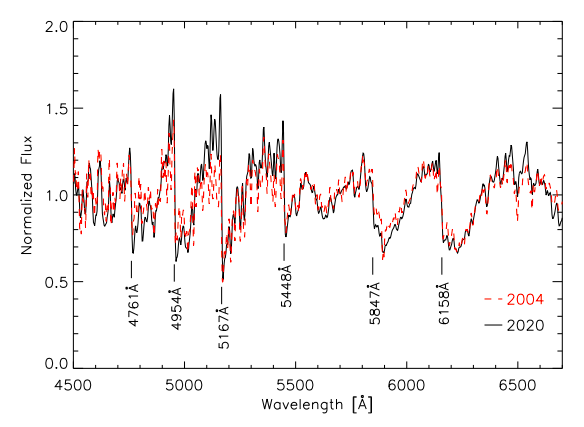Betelgeuse Just Isn’t That Cool: Effective Temperature Alone Cannot Explain the Recent Dimming of Betelgeuse suggests that the recent dimming might be caused by increased optical absorption by dust around the star, based on a spectral analysis.
Question: The images below show absorption features assigned to titanium oxide (TiO) around Betelgeuse. Why are these features saw-tooth shaped? When I think of absorption edges the transmitted light drops when crossing from lower to higher energy photons, but here the measured light increases from lower to higher energy.
note 1: A quick check shows that these shapes are typical, so it's really just a matter of me not understanding why these features have the particular shapes that they do.
note 2: There is some discussion of Betelgeuse's titanium lines in the second half of Scott Manley's Astronomers Think They Know Why Betelgeuse Got Dimmer
Fig. 1.— Optical spectrophotometry of Betelgeuse from 2020 (black) and 2004 (red).
Fig. 2.— Normalized and continuum-flattened spectra of Betelgeuse from 2020 (black) and 2004 (red dashed), illustrating the relative depths of the Teff-sensitive TiO bands (labeled) in both spectra.

